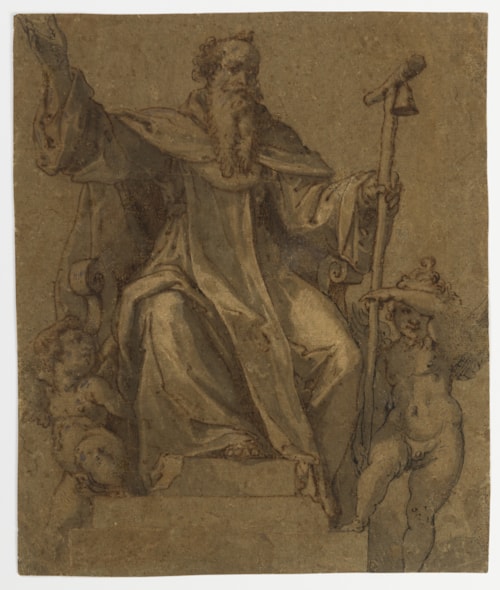
Felice BRUSASORCI
Verona 1539/40- - Verona 1605
Biography
The son and pupil of the Veronese painter Domenico Riccio, known as Brusasorci (c.1515-1567), Felice Riccio was likewise known as Brusasorci. He left Verona to complete his training in Florence, where he was exposed to the influence of the Mannerism of Giorgio Vasari and his contemporaries. Like his father, Brusasorci spent the bulk of his career in Verona, where among his earliest works is a Virgin and Child with Saints for Santissima Trinità, painted in 1566, and a Virgin in Glory with Three Archangels for San Giorgio in Braida, completed around 1570. The following decade found the artist working in several other Veronese churches, including San Silvestro, Sant’Anastasia, San Pietro in Carnario, San Giorgio Maggiore and San Tomaso Cantauriense, as well as the church of the Madonna di Campagna at San Michele Extra, just east of Verona. Brusasorci also painted a number of distinctive works on slate or marble. Around the turn of the century Brusasorci’s works began to display a more intense religiosity, typified by an altarpiece of The Virgin and Child Appearing to Several Franciscan Saints, painted in 1600 for the Capuchin church in Bolzano. A significant figure in the development of painting in Verona between Mannerism and the Baroque, Brusasorci ran a large and busy studio, and among his pupils were Marcantonio Bassetti, Alessandro Turchi and Pasquale Ottini.


